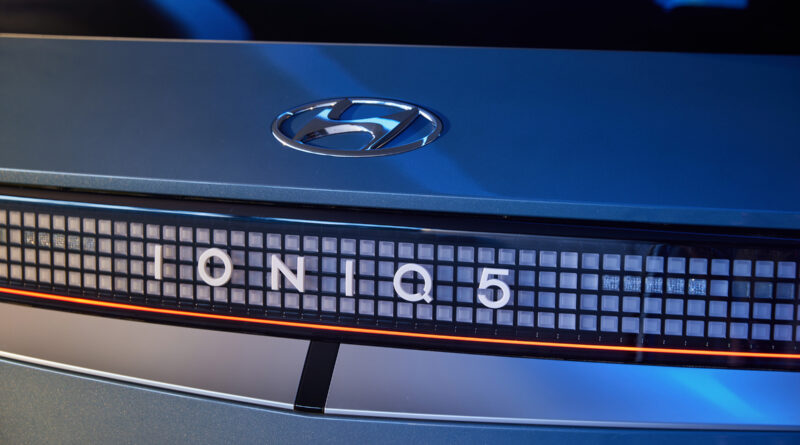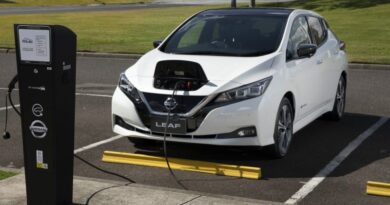Hyundai Ioniq 5: Australia’s fastest (charging) EV put to the real-world test
We’ll soon be getting behind the wheel of the new Hyundai Ioniq 5, one of the most eagerly-anticipated new EVs of 2021.
But before then we decided to put its fast-charging claims to the ultimate test.
We asked Hyundai to meet us with an Ioniq 5 with minimal charge left in the battery. Then we hooked it up to a 350kW ultra-rapid charger to see how long it would take to pump electrons into the EV newcomer.
READ MORE: EV charging race: Hyundai Ioniq 5 v Porsche Taycan v Audi e-Tron
800V, 350kW
The Ioniq 5 is only the second car in the country (alongside the Porsche Taycan) that can take an 800V charge (all others top out at 400V). Doubling the voltage means you can get double the power out of the same charging current (measured in amps).

Hyundai claims the Ioniq 5 will accept up to 350kW of charging power, although the EV Database and some overseas sources suggest 232kW is the most it will take.
Like all other DC charging EVs, the Ioniq 5 can plug into the fastest 350kW charger, but, as our charging experience shows, it appears it won’t take more than about 230kW of the 350kW available. We’ll get to that…
Out of the blocks fast
We wanted to ensure the Ioniq 5 was at a low state of charge. Many EVs will accept the fastest charging capacity somewhere below 20 or 30 percent state of charge (SOC).
Our Ioniq 5 arrived with 6 percent SOC and immediately started accepting more than 100kW of charge.
Check out the video above to watch the entire charging cycle; we’ve sped it up to make it slightly less dull.
For the purposes of this charging test we started the clock and data logging at 10 percent SOC.

At that point the car was accepting more than 180kW.
It edged up to 190kW on the way to 25 percent SOC, at which point the pace started to pick up.
200kW-plus
The Ioniq 5 was quickly accepting more than 200kW, at which point its kilometre-per-hour figure – how many kilometres of range is being added for each hour it’s charging – was approaching 1200km/h. Now it must be said, that’s an impressive-sounding number, but it does not mean that plugged in for 60mins, you’ll accrue 1200km in range – the battery won’t allow it, for one, but also the charging speed will fluctuate, as we’ve demonstrated on this test.
That’s for the rear-wheel-drive version of the Ioniq 5, which uses a claimed average of 17.9kWh per 100km.
The AWD version gets exactly the same 72.6kWh battery but uses more electricity due to the added weight of the extra electric motor. Still, its km/h average calculation was 1051km/h.
Soon after the Ioniq 5 topped 30 percent state of charge it surpassed 220kW of charging power, according to the Ionity charger’s display screen.
350kW peak? Not quite…
Somewhat unexpected was when the Hyundai was taking the most charge.
Rather than when the battery was almost completely drained, it occurred at about half capacity.
By this time the front cooling flaps had opened and a fan was busy thrusting warm air out of the battery cooling system.
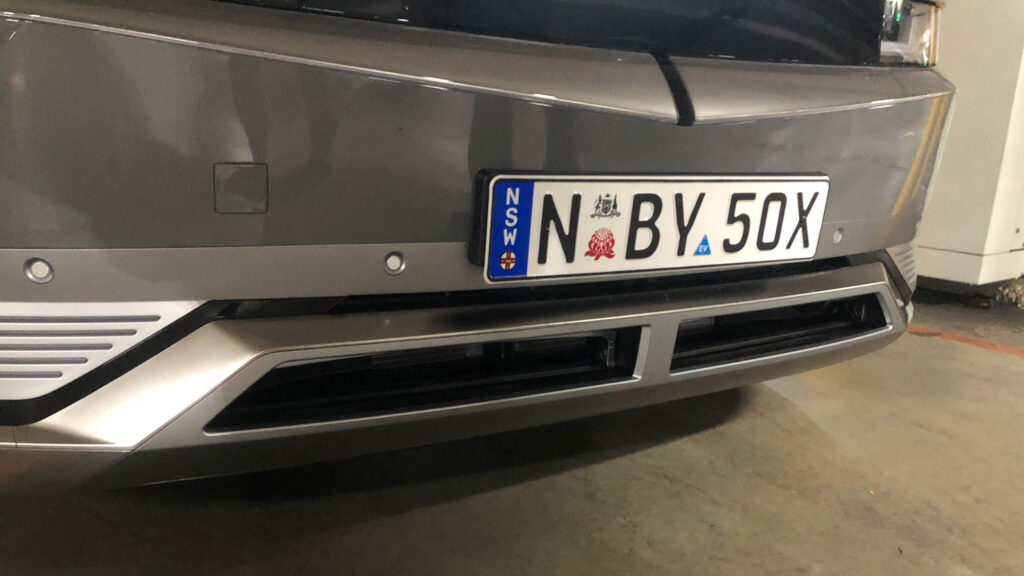
The highest charging power we saw was 225kW – up to 1257km/h for the rear-wheel drive or 1184km/h for the AWD we had here – adding weight to reports the Ioniq 5 cannot accept the advertised 350kW charging power.
And while Hyundai says it can accept 800V of charging power, the peak we saw was 731V.
Those numbers are still mighty impressive, and from what we can tell the Ioniq 5 is the fastest charging EV in the country.
10-80 percent charging time…
Hyundai is very specific in the charging rate for the Ioniq 5. A specification sheet claims it will take “approximately 17 minutes 16 seconds” to get “up to 80 percent charge”.
We used the time code on our video footage to calculate our experience. We stopped the video at the exact point it clicked from 9 to 10 percent then again at the exact point it ticked over from 79 to 80 percent.
And the time it took was… 17 minutes and 19 seconds.
OK, so it fell three seconds short of the claim. We can’t imagine too many people will have an issue with waiting another breath or two.
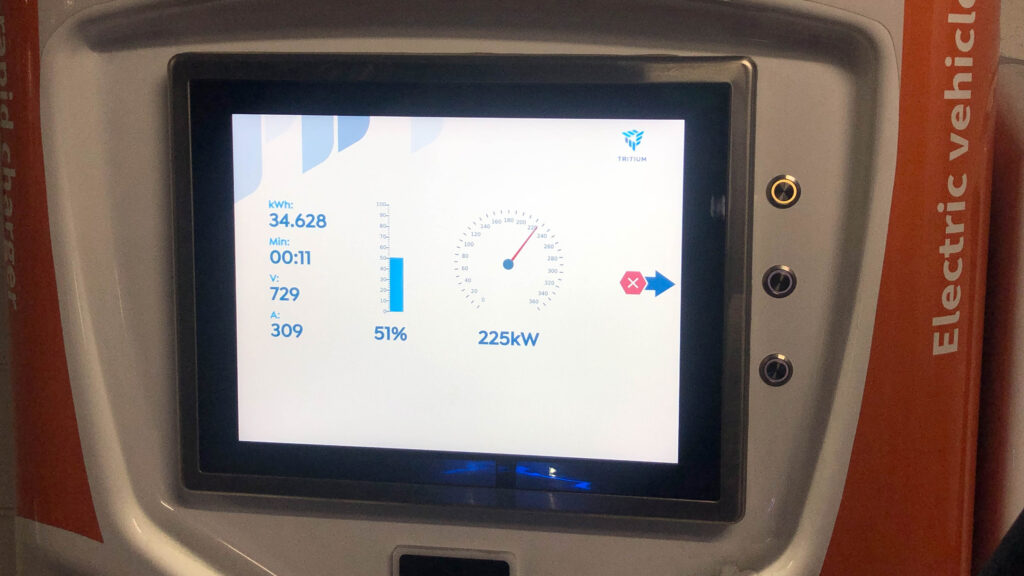
Short story: the Ioniq 5 is extremely quick at piling on range.
EV charging variables
Besides, charging time can depend on many factors, mostly temperature related.
Our Ioniq 5 was driven to the charging venue and parked for about an hour before it was plugged in.
The Bureau of Meteorology recorded the temperature at the time we were charging as 21 degrees Celsius. But the charging station was in a carpark so it’s safe to assume it was a few degrees warmer.
The point is, our charging occurred on a regular day: it wasn’t blisteringly cold and it wasn’t a furnace. And the car didn’t have any special treatment beforehand.
So the conditions should have been close to ideal for an EV.
The charging top end
The charging rate started dropping off noticeably over about 60 percent state of charge.
But unlike some others we’ve experienced it was a gentle drop-off to the point where it was still accepting about 140kW when it touched the 80 percent target.
But we kept it charging for the fun of it.
The Ioniq 5 only dropped below 100kW of charging power at 83 percent SOC.
By the time it hit 90 percent SOC it had dropped to 50kW of charge.
But to put that in perspective, that’s still classified as a fast charge – and is the level at which some EVs top out.
So even a full charge is likely to be a brisk experience if you can find the right charger.
The numbers: 1257km/h, 100km in 5 minutes
The peak charging power we saw on the Ioniq 5 was 225kW, well below the 350kW claim – but well above most other EVs on the market.
The average rate of charge over the 10-80 percent test period was 190kW.
That’s arguably the most impressive part of the whole charge: it maintained such a high rate of charge across the bulk of the battery SOC spectrum.
The only EV that claims more is the Porsche Taycan, at up to 270kW if you get one with the bigger (Performance Plus) battery.
So, for the Ioniq that makes for a kilometre-per-hour charging peak of 1257km/h. Impressively, the average over the full 10-80 percent charge was 1064km/h.
So, how does that stack up with Hyundai’s claim that you can put 100km of range in within five minutes?
Assuming that average 190kW rate of charge and for the 2WD model (17.9kWh/100km) it makes for an average of 89 kilometres for each of the five minutes.
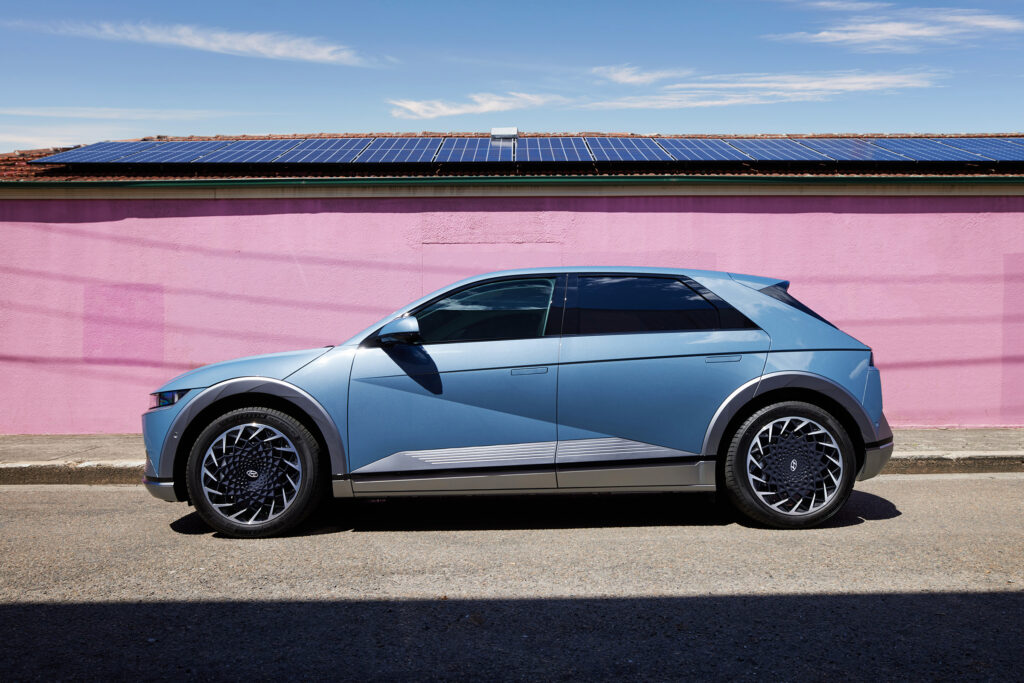
For the AWD that drops to 84km per five minutes – again, assuming the average charge rate.
However, the charge rate fluctuates throughout that charging period.
So we went back to the video footage to pick out the fastest charging time that would give us about 100km of range. Between 33 and 53 percent state of charge the charging power never dropped below 219kW.
Using that as our lower level it means the single motor version could take 102km of range in five minutes whereas the dual motor took 96km.
However, that number peaked at 225kW and was often above the 219km average we’ve used.
So, yes, we’re comfortable saying you can get 100km of EV range in five minutes in an Ioniq 5 – provided you’re using an ultra rapid charger and provided the state of charge is somewhere near the middle of the battery capacity.

